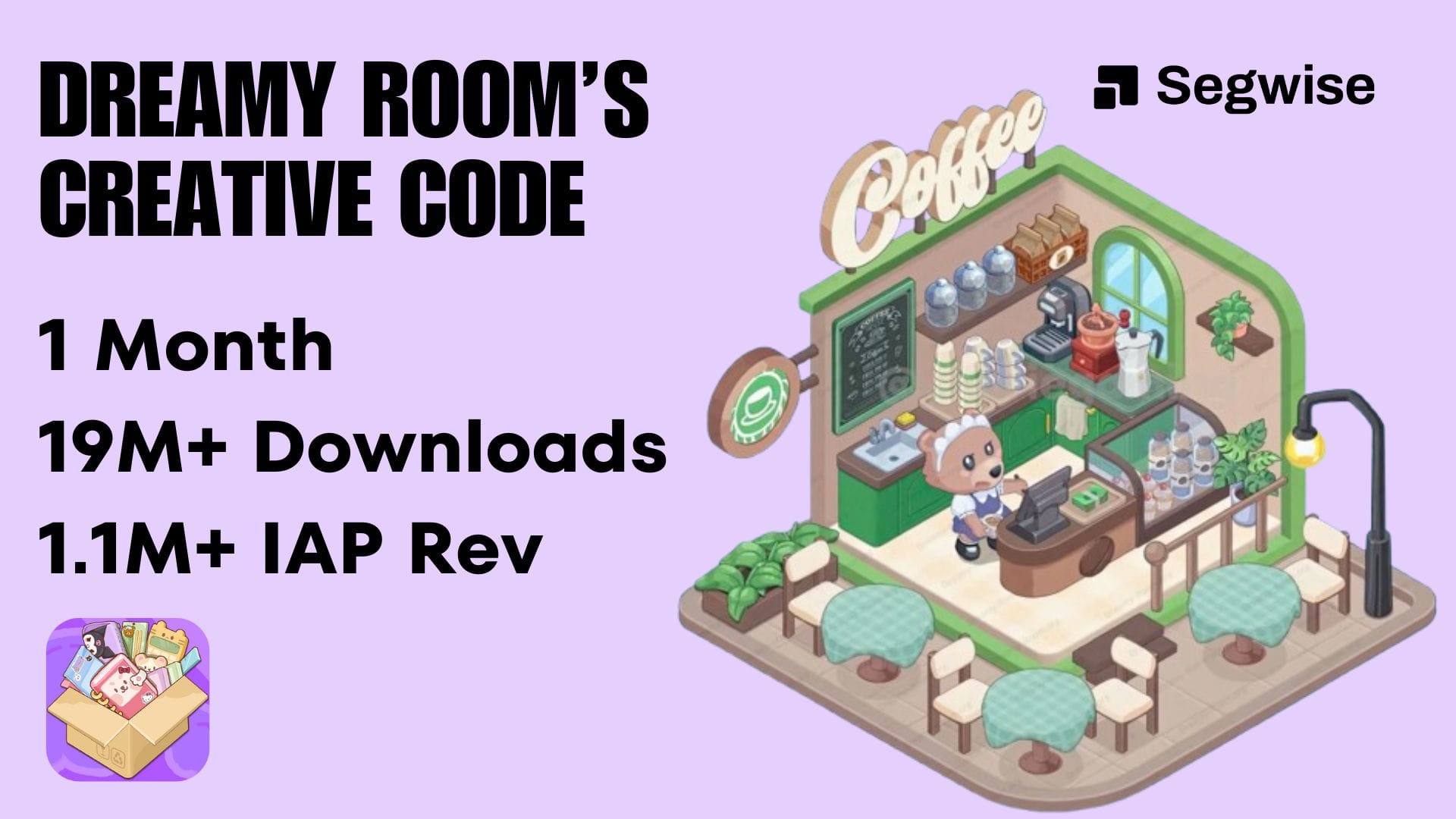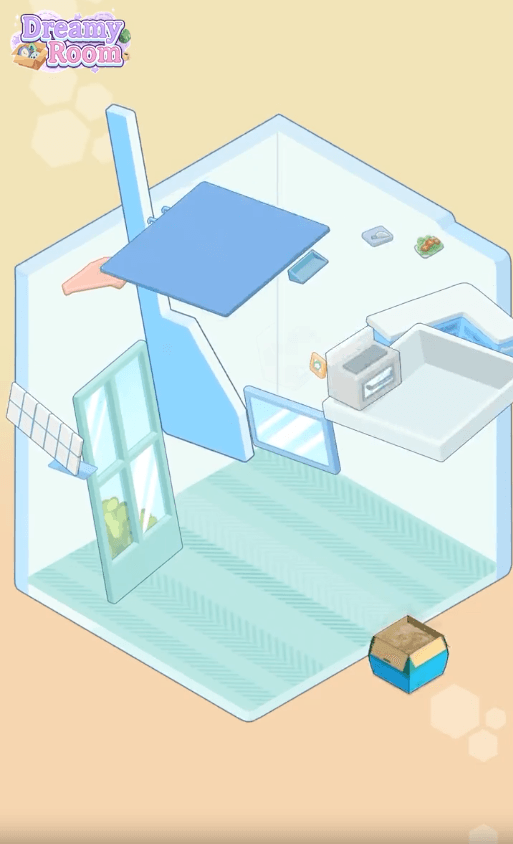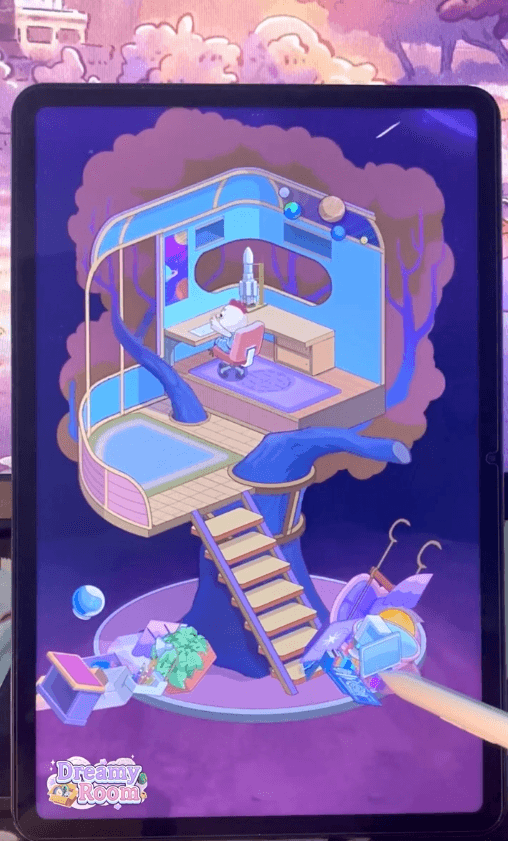Cracking the Code: How Dreamy Room Gained 19M+ Downloads with Winning Creatives
Unlocking Dreamy Room's Creative Success

Have you ever launched a app install campaign and wondered exactly why certain ads dominate while others barely move the needle? Understanding the creative elements behind successful ad campaigns can feel elusive, like catching lightning in a bottle. But there's good news: these patterns are identifiable, measurable, and replicable if you know how to look for them.
In just 90 days, ABI Game Studio's Dreamy Room gained over 19 million downloads and generated more than $1.1 million in revenue. What's their secret sauce? We analyzed their top-performing creatives using Segwise's AI Creative Agent, and here's what we discovered.
In this post, you'll uncover the precise creative tags and creative appraoch driving Dreamy Room's success, some of the new variables they're testing, and actionable insights you can leverage for your campaigns.
Also check out How DC: Dark Legion Made $18M in 60 Days: Their Creative Strategy
Inside Dreamy Room's Winning Creative Playbook
Core Creative Patterns: The Dopamine Loop
Dreamy Room's top performing creative universally follow a three-step dopamine-driven sequence: unpack, organize, and dopamine spike. Specifically:
- 82% of creatives start with unpacking and organizing gameplay, immediately engaging users with clear, satisfying actions.
- 18% lead with litter cleanup gameplay, tapping into viewers' innate desire for order and organization. (It's as if Marie Kondo herself made these creatives.)
This consistent psychological loop is critical because it instantly gratifies viewers, reducing bounce rates and increasing ad engagement (installs).
100% Gameplay-Focused Ads

Every top-performing creative from Dreamy Room showcases the gameplay:
- No static imagery, no cinematic trailers, just compelling, relatable, satisfying gameplay.
- Some creatives incorporate subtle tutorial elements, lowering cognitive barriers and enhancing user onboarding.
Level Carousel Ending: Highlighting Game Depth
A strikingly effective tactic is the level carousel conclusion, featured in 100% of analyzed ads. On top of that, here's how the endings were executed:
- 64% creatives end showing full level completion, giving viewers a satisfying sense of achievement and closure.
- 36% conclude mid-gameplay or room arrangement and organization, leaving the viewer hanging and longing for more. This leads to curiosity and drives app installs due to the incomplete narratives.
These methods ensures the viewer perceives significant game depth, making installs a more likely decision.
Innovative Creative Experiments (Last 30 Days)
Dreamy Room obviously wants to stay ahead on their creative game and find their hero concepts + prepare for creative fatigue. For this they're continuously tests new ideas and some of the recent successful experiments include:
- Top-down UGC phone-cam footage: Real hands interacting with gameplay on an iPad, offering authentic and relatable visuals.
- Story-led voiceovers with bizarre hooks: Engaging audiences through curiosity-driven audio storytelling simultaneously with the gameplay creative. (Quite a nice touch!)
- Animated opening scenes featuring characters: Introducing slight narrative depth with couple of seconds of cinematic intros, with character. A borrowed Capybara Cookingdom and the usual suspects - cats. Mostly done to engage emotionally with users immediately.
- Fresh background settings: They're introducing varied aesthetics like Japanese landscapes, tree houses, and gyms to refresh viewer interest and attract diverse audience segments. Also, another great way to highlight game depth.
Actionable Creative Playbook for UA Managers
How can you apply these insights effectively in your next campaign? Here's your tactical blueprint:
1. Lead with Dopamine Spikes
Immediately capture attention by showcasing the most visually satisfying transformations. Skip idle moments or static screens. Jump straight into the action, unpacking, cleaning, and organizing, to trigger immediate emotional gratification.
2. Systematic Tagging for Precision
Treat every creative element, logo position, voiceover style, tutorial cues, as separate testable tags. Track performance granularly by each tag rather than entire creatives. This refined data approach ensures continuous optimization and precise adjustments.
You can use Segwise's Creative Analytics tools or AI agents to autmatically tag and analyze your creative data across all ad networks, all in one place. Make high impact creatives backed by data!
3. Consistent Art-Pack Refresh
Maintain viewer interest with monthly visual updates:
- Schedule new backdrops, room setups, or props every four weeks.
- Keep production costs efficient by reusing grids and animations.
ABI Game Studio excels at this strategy, keeping their creatives consistently fresh without inflating budgets. (They even apply the same strategy across their games - you'll see clear patterns between Perfect Tidy, Cookingdom and now Dreamy Room.)
4. Leverage User-Generated Content (UGC)

Incorporate at least a few UGC-style clips in each creative batch:
- Allocate as little as 5-10% of your creative budget to these clips for testing.
- You might just tap into their organic appeal to reach new audience segments and benefit from algorithmic boosts on platforms like TikTok and Instagram Reels. They've also worked on AppLovin for ABI in the past.
5. Showcase Progression with Level Montages
Always begin or end your ads with level montage sequences:
- Highlight the game’s depth and variety.
- Give the viewers a sneak peek into some of the other cool stuff in your mobile game and drive FOMO, compelling viewers to install the game.
Common Pitfalls to Avoid
- Overloading creatives with too many messages or visual clutter.
- Neglecting systematic testing and analysis of creative elements.
- Ignoring user feedback or market wide creative trends when refreshing visuals.
Additional Insights from Industry Examples
- Include comparative insights from other puzzle or organization-based games like "Perfect Tidy" and "Homescapes," highlighting unique creative approaches.
- Reference industry benchmarks and average performance metrics for similar ad types to contextualize Dreamy Room's success.
Untapped Opportunities: Fresh Angles to Test
To further elevate your campaign performance, consider exploring these untapped creative angles:
- Before and After States: Implement failvertising by contrasting messy vs. organized room states, emphasizing transformation clearly and dramatically.
- Timer Pressure Overlays: Introduce mild urgency with visible countdown timers, aligning with Dreamy Room’s built-in gameplay timers.
- Pure ASMR Cuts: Strip away music, emphasizing sounds like item placements or box openings, tapping into popular silent-scroll trends on TikTok.
- Fail-State Hooks: Deliberately end ads with messy or incomplete states to leverage the psychological discomfort of unresolved tasks, boosting click-through rates.
Final Thoughts: Cracking the Code for UA Success
Dreamy Room’s 19M downloads aren’t just luck. They're the result of precise creative execution and continuous experimentation. By embracing their proven dopamine-driven loops, systematic tagging, and consistent experimentation, you can replicate this success for your game.
Ready to implement these strategies and turbocharge your creative ROAS? It’s time to make your campaigns not just noticeable, but unforgettable.
What creative angle will you test next?

Comments
Your comment has been submitted successfully!